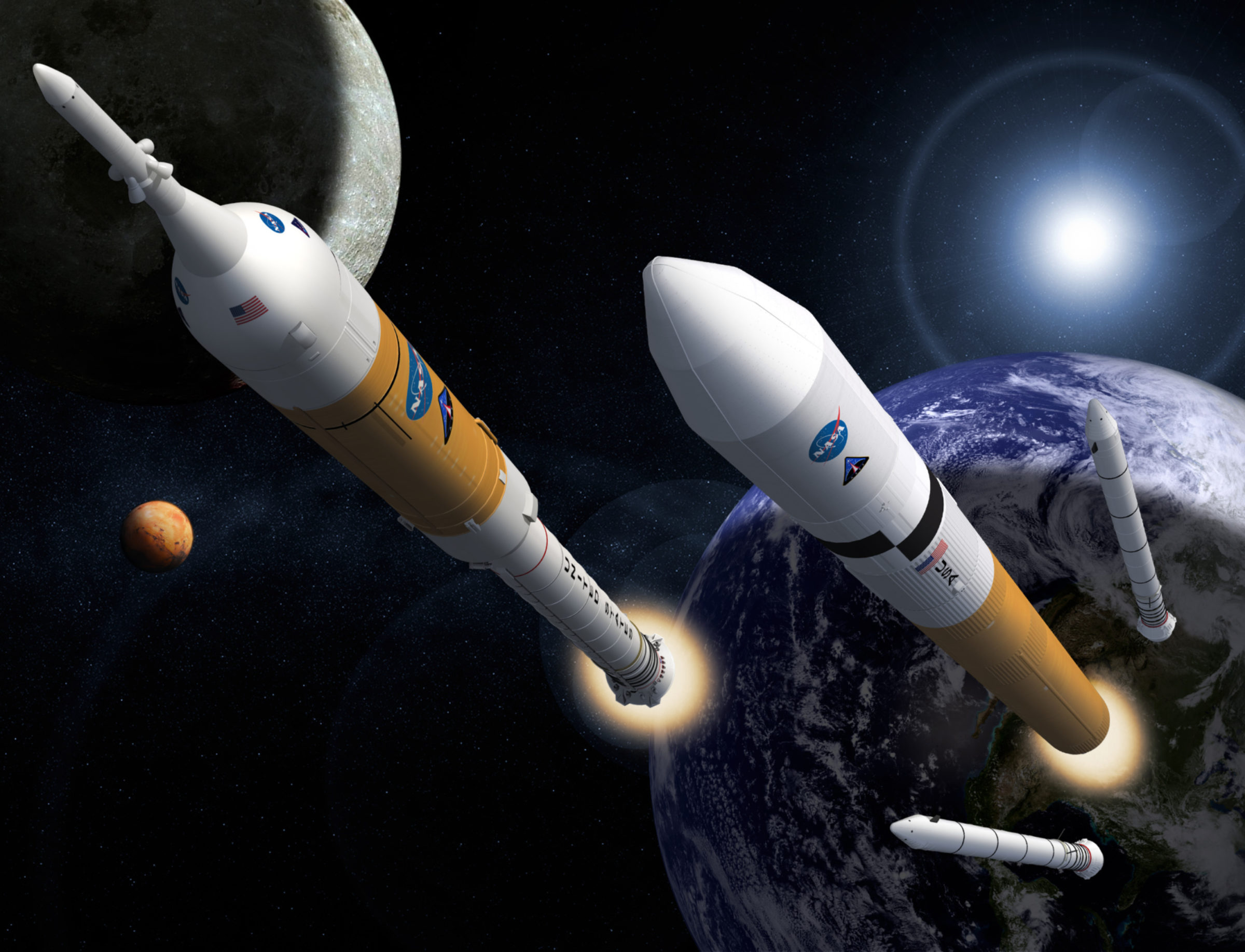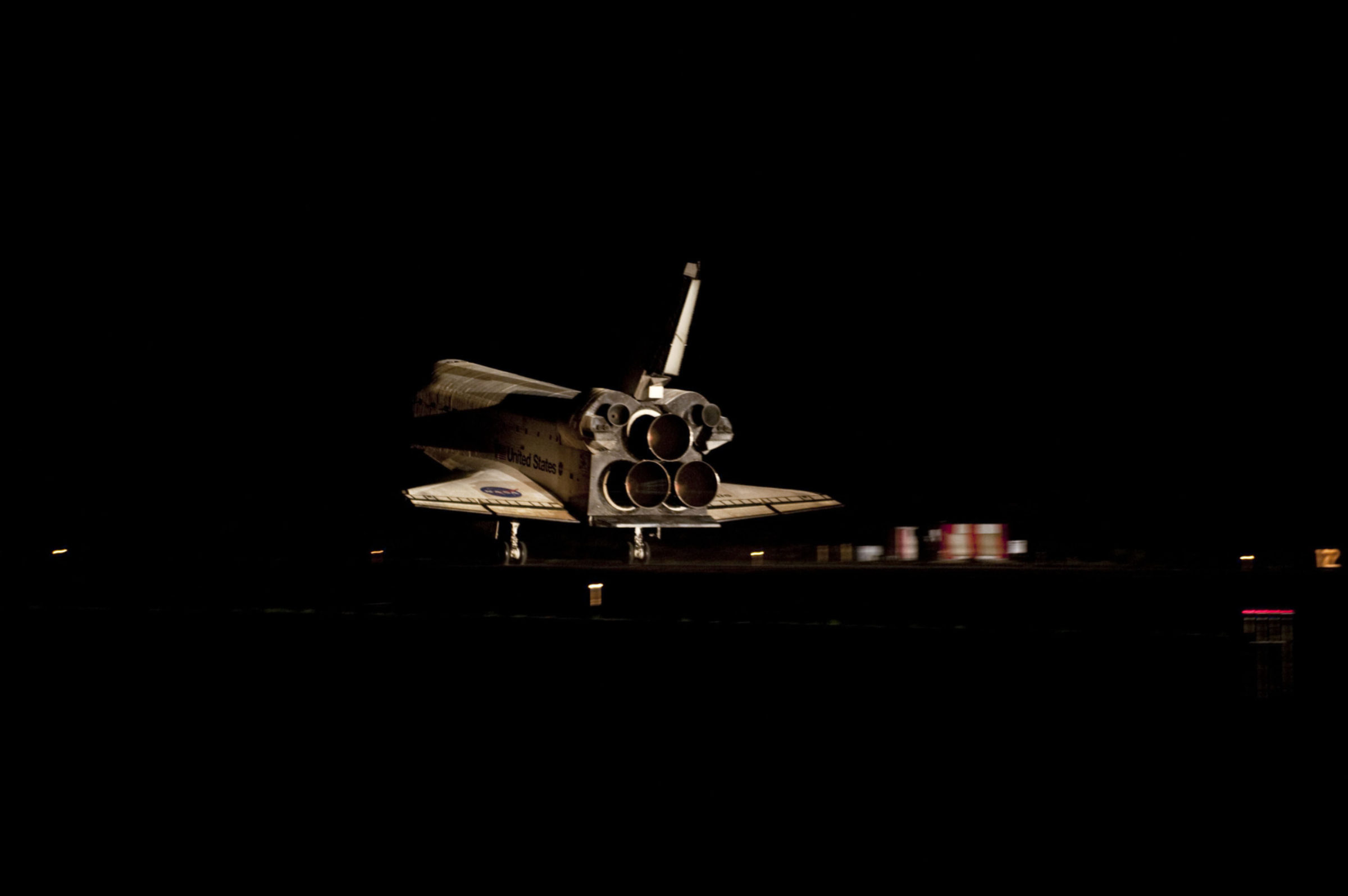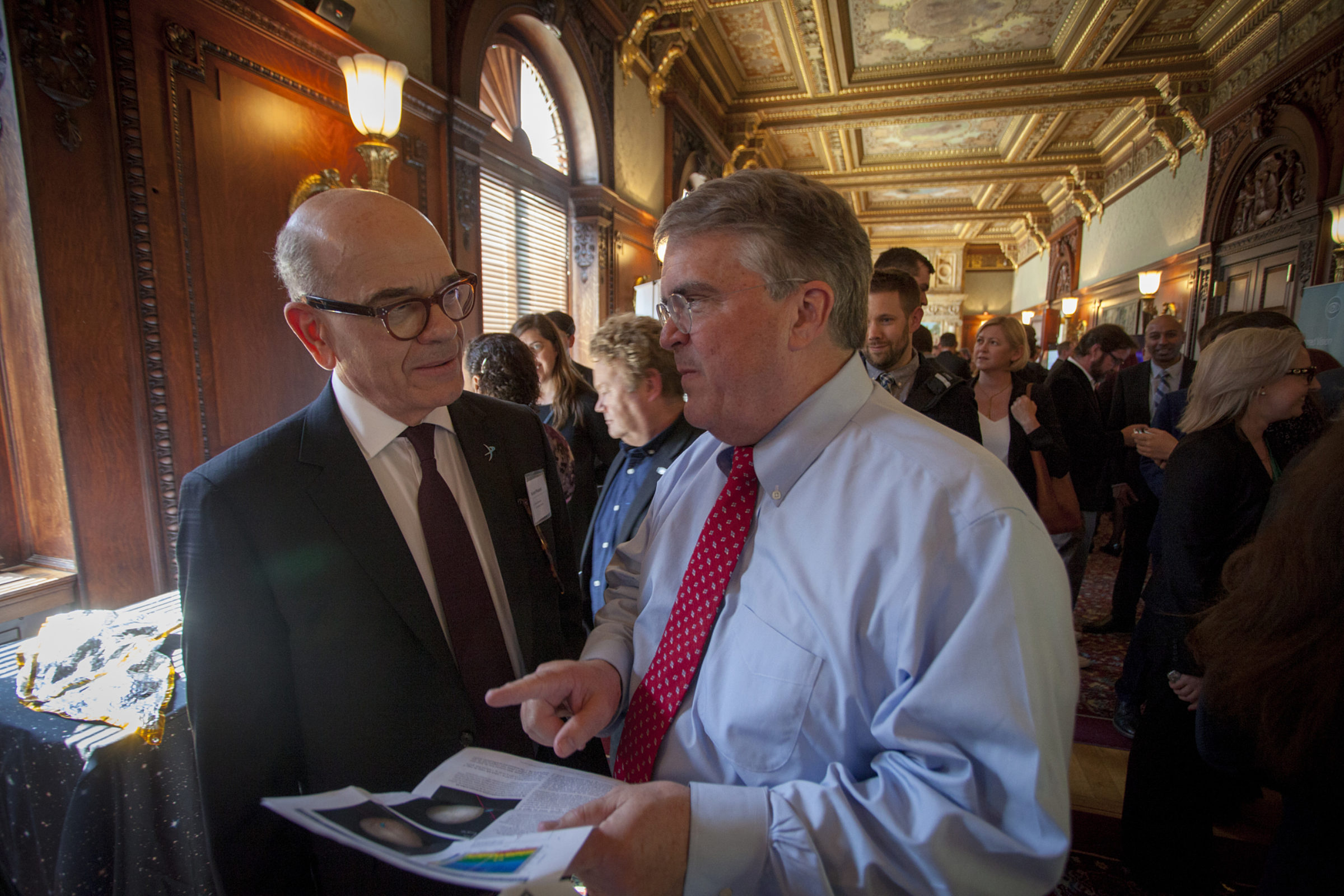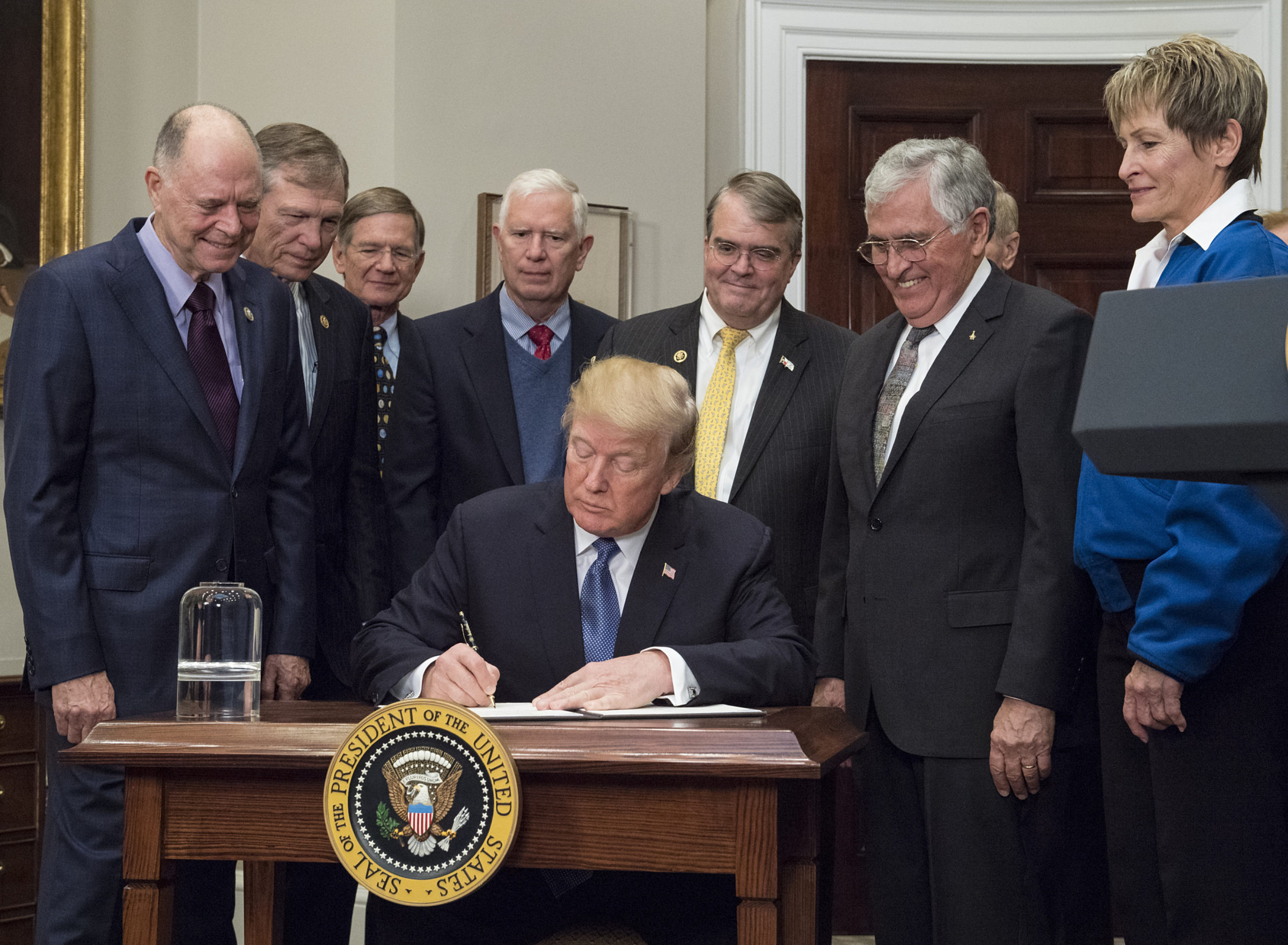Casey Dreier • Dec 16, 2019
The Most Important Space Policy Events of the 2010s
The 2010s was a decade of major changes to space policy, particularly regarding human exploration in the United States. While the end of the 30-year Shuttle program and the sudden cancellation of the Constellation program were themselves major policy events, the resulting political reaction created major programs and policies that defined NASA during the 2010s and, very likely, for decades to come.
Marcia Smith, founder of Space Policy Online, joined me on a recent episode of Planetary Radio: Space Policy Edition to explore the most impactful space policy events the 2010s. The following is a condensed and edited version of that discussion.
The End of Constellation
Marcia: On February 1 2010, President Obama revealed that he was canceling the Constellation program. There was a huge furor in Congress. It was not a partisan issue; it was the two ends of Pennsylvania Avenue disagreeing strongly with each other.
On April 15, President Obama went down to Kennedy Space Center and gave a speech and said (paraphrasing) "we're not going back to the Moon, been there, done that. Instead, we're going to go to Mars. Mars is our goal, and we need a stepping stone, and that is going to be an asteroid." The asteroid mission never really won a lot of support. So a lot of the early part of the decade was lost because of this battle between Congress and the White House over the future of the human spaceflight program.

Also at this time there was tremendous churn when the Space Shuttle program was being terminated, so the future of human spaceflight was very unclear. This characterized the early tumult of the first part of the decade.
Casey: This is all happening in the context of the greatest recession that this country had seen in almost a century.
Marcia: Obama was enthusiastic about space exploration. He's the only presidential candidate I have known in my lifetime who actually used space in his campaign ads. But then he walks into his office on January 20 and he has this huge recession. The Constellation program was costing a lot more than had been advertised. He had this expert commission brought together under Norm Augustine and they said, basically, you need $3 billion a year more. He had to change some of his plans.
The End of Shuttle/Dependence on Russia for U.S. Access to the ISS
Marcia: The termination of the Space Shuttle without anything to replace it was a questionable policy choice. You can look back on it and say it didn't look so bad in 2011. We were friendly with the Russians and it was only supposed to be a 4-year gap. People were not as worried about it. Now, of course, if you look at the decade that we're just finishing up the geopolitical relationship between the United States and Russia has changed dramatically after Russia took over Crimea in 2014. And now it's an 8-year gap and we're hoping it's not going to be 9.

Casey: Do you think that that tight inter-relationship of sending humans into space through Russia altered the overall foreign policy of the U.S. with Russia?
Marcia: I see it as space being isolated into its own little pocket. Both sides are protecting it because it's important to them for different reasons. Both countries want the national prestige of operating the International Space Station. But Russia also gets a lot of money from the deal and they need money for their space program. The United States is willing to pay that money because it has no choice, although it's working on alternatives.
Casey: Is there a long-term consequence from this? Has Russia grown too dependent on NASA money to fund its space program?
Marcia: Well, that's going to be a very interesting question. Obviously, the Russian space program has been struggling because they don't have a lot of money going into it. Once commercial crew is operational, NASA and Russia both said that they're going to be flying their astronauts and cosmonauts on each other's vehicles, because they want to be sure there's always at least one American and one Russian up there. But it'll be an era where the money is not coming from NASA to pay Russia for those seats—at least that's what NASA is expecting.
So is Russia going to be able to maintain the production levels of the Soyuz and their rockets without that money coming in from NASA? I think that's a very good question and I don't know the answer to it.
But I think that, overall, the space station partners feel that ISS is the prime example of international cooperation. Getting through the difficult marriage over the course of this program—the on-again, off-again program that starts in the 1980s, then adding Russia in the 1990s—through all of that it's really been a Herculean task to keep the partnership together. I think that people see this as an encouraging sign that, as we move further out into the solar system, we will get these partnerships, including new commercial partnerships, and be able to keep them together, no matter what happens.
The 2010 NASA Authorization Act
Casey: We're still living with the consequences of this. The attempt to cancel Constellation led to the NASA Authorization Act of 2010. It mandated the Space Launch System rocket, maintained the Orion crew capsule from the Constellation program, and endorsed commercial providers for cargo and crew into low Earth orbit.
Marcia: You can look at the Constellation program and say that Obama canceled it, but if you look at the work that was going on at NASA during his presidency, it was never really canceled. The destination temporarily changed from the Moon to an asteroid and then on to Mars. But NASA was still building a big new rocket. The "multi-purpose crew vehicle" turned out to be Orion. So those fundamental elements that you needed for a bold human spaceflight program, were built under Obama because Congress forced them to do it through that NASA Authorization Act.

Casey: It's an extraordinary piece of legislation to read. They're specifying the minimum metric tonnage for heavy-lift rockets and that it has to use the same workforce from the Space Shuttle and constellation programs. And this is a Congress of President Obama's same political party.
Marcia: It was Congress versus the administration. And Congress wanted to move forward with a human spaceflight program. They made clear also in that law that they wanted a balanced NASA program. They didn't want money being siphoned off from science and other areas in order to fund it. There was a lot in that law, it was very important.
Sequestration
Casey: In 2010 the Democrats lost the House of Representatives and were replaced by a very Republican majority focused on budget-cutting. They implemented a law that we know as sequestration a few years later. It was supposed to limit overall government spending and impose across-the-board cuts if no specific cuts were agreed by Congress. During this period of the Obama presidency, NASA takes a significant dip in terms of its real spending power, which is unusual compared to most presidential administrations. New programs such as the SLS really squeezed NASA's portfolio, which is one of the reasons we had the Asteroid Redirect Mission: NASA had no money to create a human-qualified lunar lander or spacecraft beyond what they were already designing with Orion. You saw significant cuts to planetary science and the delay or cancellation of major programs at NASA that we're still rebuilding back from. We're facing a 5-7 year gap in planetary science and astrophysics due to these cuts and overruns with the James Webb Space Telescope. These are going to manifest themselves in the next few years because of budgeting decisions made seven years ago.
Marcia: Sequestration was a Damoclean sword hanging over all the agencies until quite recently. They actually implemented sequestration in fiscal year 2013 and you can see the big dip NASA and other agencies. After 2013, when they saw what direct impact it had across government, Congress said to themselves "never again". But they didn't want to just vacate the 2011 budget act, so they did it in 2-year chunks. Every two years, they would pass another waiver to the Budget Control Act, but then you'd have the Damoclean sword hanging over you for the next two years. And so it was just a long, drawn-out process. We never knew from year to year, whether or not agencies were going to be hit with sequestration or not. It's been a very challenging time for research and development agencies like NASA to plan their futures.
NASA's annual budgets during the Obama Administration, adjusted for inflation using the NASA New Start Inflation Index. The vertical axis displays NASA's Presidential Budget Request and the final congressional appropriation in billions of dollars. Note that the y-axis is scaled for clarity. The horizontal axis is fiscal years. Detailed data including outlays, alternate inflation indices, non-inflation adjusted numbers, and White House budget requests are available to view or to download as an Excel spreadsheet.
Casey: After sequestration was implemented, they kind of lost the taste for it. You can see the gradual increase of NASA's budget after 2013, and the political dynamics changed once President Trump came into office.
Marcia: Right now, Congress has been very generous with NASA. They're giving it a lot more money than is being requested. It's the good times and I don't know how long that's going to last. Sooner or later there's going to be a reckoning and someone's going to be interested in deficit control again, and I think that NASA needs to be aware of that. You really never can rest on your laurels.
John Culberson Becomes Chairman of the House Commerce, Justice, and Science Appropriations Subcommittee

Casey: Another item that is important in terms of implementation of policy is the ascension of John Culberson to the chairmanship of the Commerce, Justice and Science Committee Subcommittee of Appropriations in the House of Representatives.
John Culberson is an honest-to-God space fan. He exudes a passion for space at a level that I don't even see in most people who work in the space business. His passion was finding life on Europa. And Europa Clipper—a flagship-class, $3 billion dollar mission—exists today because John Culberson effectively forced NASA to take it on by appropriating hundreds of millions of dollars to the project as chair of the committee that funds NASA.
Marcia: Mr. Culberson clearly is a space cadet, I don't think there's any question about that. I agree with you that Europa would not be happening if it were not for his personal enthusiasm for it. The planetary science community owes a lot to him.
Space Policy Directive #1/Moon 2024 Surprise
Casey: I went back and forth on whether to include this because we just don't know the outcomes yet, but I think enough has happened to consider Space Policy Directive #1, the first Space Policy directive of the Trump administration, as consequential.
It was signed in December of 2017. And all it really did was change a line of text the official National Space Policy released in the Obama era to say that the United States will lead the return of humans to the moon for long term exploration and utilization. You saw significant movement towards this goal in a way that we just never saw under the previous administration for sending astronauts to an asteroid, particularly with the progress toward the Lunar Gateway.

Marcia: Is it a significant space policy development? Sure, because it puts us on another path towards the future. But I think it is overshadowed by the March 26 decision by Vice President Pence to land on the Moon by 2024.
After Trump put the Moon back in the plan, NASA came up with a plan to implement it saying we're going to get back there by 2028. I thought it wasn't a bad plan, I thought it was reasonable and achievable if Congress came up with a reasonable amount of money.
But then you have this pivot back on March 26, when suddenly we have to get there in five years, which just seems a bridge too far in terms of the amount of money it's going to take, even if you do this with public-private partnerships.
I see a huge change after March 26. The Gateway was going to be International, and a big feature of it was sustainable exploration. And suddenly, no, we have to be there by 2024. So first we're going to do it fast, and then we're going to do it sustainably. And they start pouring money into public-private partnerships to create human lunar landers, and they change how they are going to do Gateway, also through public-private partnerships
At the same time, you had NASA getting frustrated with SLS and deciding to put the exploration upper stage (EUS) to the side because they wanted Boeing to focus just on the Block 1A for Artemis. And now you're getting pushback from the Senate saying no, you have to build EUS. We have a chaotic soup of competing interests. I feel like we're right back to where we were after Obama canceled Constellation. You have pushback from Congress on some of these things that NASA and the White House want to do by people in their own party.
The Rise of Public-Private Partnerships
Casey: Let's talk about public-private partnerships, which you suggested as one of the critical developments in this decade.
Marcia: The way NASA defines a public-private partnership is that the government and the private sector put money into the development of something and NASA will buy services instead of owning the hardware. The idea is that the companies will make money off of selling services to the government as well as other customers.
With commercial crew, (then-Associate Administrator of the Human Exploration and Operations Mission Directorate) Bill Gerstenmaier came the closest to publicly saying what the percentage split was between government money and the private sector money, which was that NASA was paying 80% to 90% of it. So there's still largely government money going into these programs and it's the government currently buying the services. They still haven't gotten to the point where NASA is one of many customers, which is NASA's overall goal for these things.

Casey: Why do you think that public-private partnerships have grown so popular, despite seeing mixed outcomes in the last 10 years?
Marcia: I think that NASA is hoping to offload some of the upfront costs of development and get things done more quickly. We haven't seen it play out yet. The only success so far is commercial cargo. And I give credit to both SpaceX and to Orbital Sciences (now owned by Northrop Grumman). Both of those companies demonstrated that you could technically build the vehicles—the rockets and the spacecraft—to accomplish a task for a government customer. They probably did it less expensively than if NASA had used the traditional cost-plus contracts. What they haven't demonstrated is that there are other customers, so that from a business standpoint, they can make a go of it even if NASA stops paying for those services for whatever reason.
That's the key for these other things that NASA wants to use them for, like having commercial space stations where NASA is only one customer. I just don't know how you get there. We've had space stations galore. The first space station went up in 1971, a Russian station called Salyut 1, and after all these decades over which we've had space stations, we're still looking for that killer app that's going to demonstrate that there's something profitable that you can do with humans in space.
They're using a model that's unproven, not just for today, but they're building it into their future plans without any evidence that it's going to work out.
Casey: When the government is depending on these companies to provide a required service, it's never really a fixed price, right? It's never truly a partnership if the government needs a capability—it gives a lot of leverage to the companies developing it.
Marcia: We saw that decades ago with the evolved expendable launch vehicle (EELV) program. That was an early example of a public-private partnership. In the 1990s it looked like there was going to be a lot of launch business. So Boeing invested a lot of money in upgrading its rockets and Lockheed Martin spent a lot of money upgrading their rockets, in addition to some government money. And then the market collapsed. The government had to have launches and the companies said, "pay us more, otherwise we can't build these rockets." That's an example of a public-private partnership not working out.
We now have one example, commercial cargo, where it worked out from a technical standpoint. And that's all we have for data points. And yet, all the eggs are going into these public-private partnership baskets. Maybe it'll work out. I just note that, from a policy perspective, it's an additional risk.
Casey: The next decade is going to be a test of this hypothesis. We've made a lot of promises in terms of policy in the 2010s that are going to define the 2020s, and we're going to have to live with those consequences.
On the Decade as a Whole
Casey: What was frustrating or exciting in this last decade for you? Did you experience any kind of emotional color in last 10 years that was unique?
Marcia: I hate to use negative terminology. Because I don't really feel negative about the space program overall. But it was a surprise when Obama decided out of the blue to cancel Constellation without working that through the political system in advance, that's a lot of what undid it. If he had a great new idea of how to do human exploration, and he could have worked it out with key members of Congress in advance so it didn't just fall in their laps, then maybe something better could have come out of that.
So when we had Vice President Pence come seemingly out of the blue with this idea to do something which seems absolutely impossible, which is to get people back on the moon in 5 years, it had that same feel to it. It's a frustration.
I can't say that I feel more frustrated in 2019 than I did in previous decades, because I've been feeling pretty frustrated for quite a long time. We can't just seem to agree on the path forward and execute the plan.
Casey: I hear you. I'll put in a request for a discussion at the end of 2029 to and we can follow up then.
Marcia: [Laughs] I am not discussing Moon vs. Mars again. I'm done! Just pick one and do it.
Support our core enterprises
Your support powers our mission to explore worlds, find life, and defend Earth. You make all the difference when you make a gift. Give today!
Donate

 Explore Worlds
Explore Worlds Find Life
Find Life Defend Earth
Defend Earth

